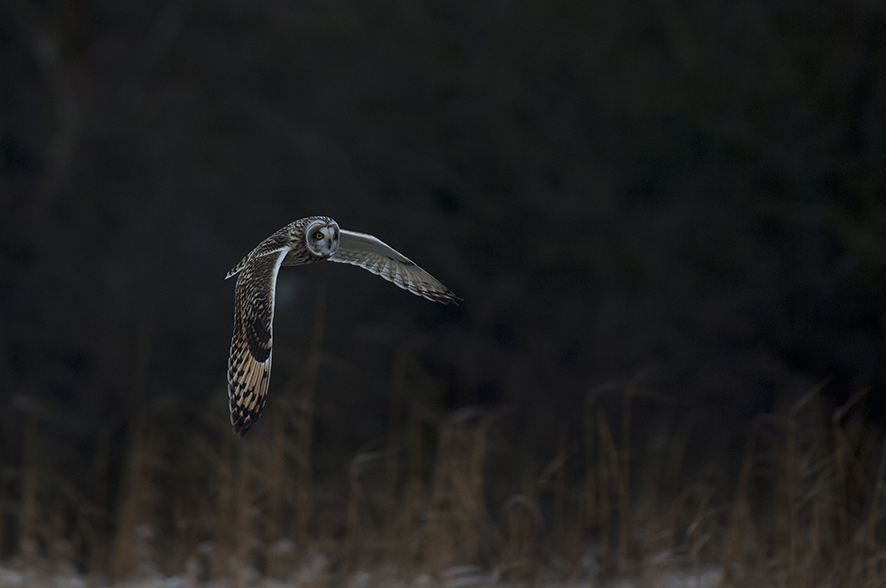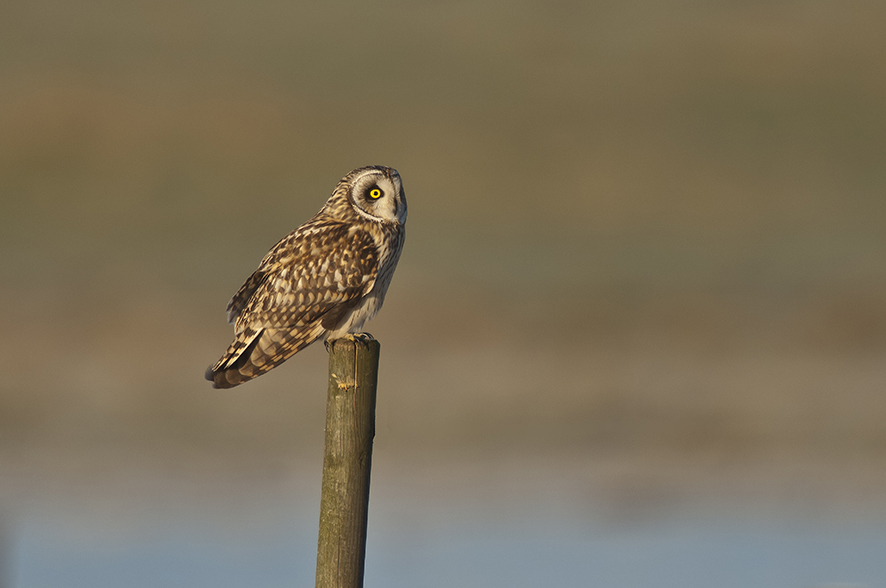Short-eared owl
- The weird owl
In many ways, the short-eared owl is a weird owl that does not live up to the expectations you usually have with owls. Firstly, you will not find it in a hollow tree in the forest. It lives in moors, meadows and tidal marshes, where it places its nest in a hollow in the ground. It does not say uhh huuh, but the male has a deep monotonous call that sounds something like “do - do - do – do”. Whereas other owls are active at night, you can often see the short-eared owl flying around in broad daylight. The short-eared owl is also remarkable because of its unique mating behaviour. The male flies in circles over the territory, while it emits its monotonous call sounds. All owls have big eyes and therefore have a very well developed vision that they use when they catch mice. Unfortunately, this means that the owl, contrary to the myths, is not very clever. It uses a large part of its brain capacity to process the visual impressions from its large owl eyes.

Very rare breeding bird
The short-eared owl is a fairly common migratory and winter guest. However, it is a very rare breeding bird, after a clear decline in recent years. The short-eared owl is so rare that Denmark is obliged to ensure suitable habitats for the species. The Wadden Sea in particular has many open moors and tidal meadows where the short-eared owl can breed.
Facts
The short-eared owl has a brown plumage with light underside. It is 38 cm long and has a wingspan of 90 to 105 cm. It flies during the day, especially in the morning and evening. It can be recognised by the large head, and by the fact that the wings bend downwards at right angles during flight. It feeds primarily on small rodents, but also takes birds and insects. It is widespread in the tundra regions of North East Europe, also sporadic in central and North West Europe. In Denmark it is a very rare breeding bird that mainly breeds in South West Jutland.


